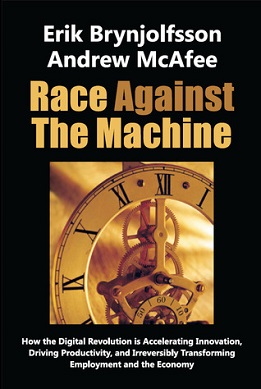 W
W4 Days, 40 Hours is a 1971 book by Riva Poor reporting on a "revolution in work and leisure" from a rearranged work week with four days of 10 hours each. In some cases, the book claims, companies can increase production and profit while giving employees more time off.
 W
WA Collective Bargain: Unions, Organizing, and the Fight for Democracy is a 2020 non-fiction book by longtime union, environmental, and community organizer Jane McAlevey. The book makes the case that unions are the only institution capable of fighting back against today's super-rich corporate class.
 W
WThe Education of Everett Richardson: The Nova Scotia Fishermen's Strike 1970–71 is a non-fiction book by the Canadian writer, Silver Donald Cameron first published in 1977 with a new edition released in 2019. It ranked 47th in a listing of Atlantic Canada's 100 Greatest Books where it was praised for giving a "gripping account" of "this pivotal moment in Canadian labour history".
 W
WThe End of Work: The Decline of the Global Labor Force and the Dawn of the Post-Market Era is a non-fiction book by American economist Jeremy Rifkin, published in 1995 by Putnam Publishing Group.
 W
WGod's Bits of Wood is a 1960 novel by the Senegalese author Ousmane Sembène that concerns a railroad strike in colonial Senegal of the 1940s. It was written in French under the title Les bouts de bois de Dieu. The book deals with several ways that the Senegalese and Malians responded to colonialism. The book casts a critical regard towards accommodation, collaboration, and overall idealization of the French colonials. At the same time the story details the strikers who work against the mistreatment of the Senegalese people. The novel was translated into English in 1962 and published by William Heinemann as God's Bits of Wood as part of their influential African Writers Series.
 W
WIn Dubious Battle is a novel by John Steinbeck, written in 1936. The central figure of the story is an activist attempting to organize abused laborers in order to gain fair wages and working conditions.
 W
WIn Place of Strife was a UK Government white paper written in 1969. It was a proposed act to use the law to reduce the power of trade unions in the United Kingdom, but was never passed into law. The title of the paper was a reworking of the title of Nye Bevan's book In Place of Fear.
 W
WMarching Men is a 1917 novel by American author Sherwood Anderson. Published by John Lane, the novel is Anderson's second book; the first being the 1916 novel Windy McPherson's Son. Marching Men is the story of Norman "Beaut" McGregor, a young man discontented with the powerlessness and lack of personal ambition among the miners of his hometown. After moving to Chicago he discovers his purpose is to empower workers by having them march in unison. Major themes of the novel include the organization of laborers, eradication of disorder, and the role of the exceptional man in society. The latter theme led post-World War II critics to compare Anderson's militaristic approach to homosocial order and the fascists of the War's Axis powers.
 W
WPelle the Conqueror is a Danish novel written by Martin Andersen Nexø. The book was published in four volumes, beginning with Boyhood in 1906, Apprenticeship in 1907, The Great Struggle in 1909 and concluding with Daybreak in 1910.
 W
WRace Against the Machine is a non-fiction book from 2011 by Erik Brynjolfsson and Andrew McAfee about the interaction of digital technology, employment and organization. The full title of the book is: Race Against the Machine: How the Digital Revolution Is Accelerating Innovation, Driving Productivity, and Irreversibly Transforming Employment and the Economy.
 W
WThe Second Machine Age: Work, Progress, and Prosperity in a Time of Brilliant Technologies is a 2014 book by Erik Brynjolfsson and Andrew McAfee which is a continuation of their book Race Against the Machine. They argue that the Second Machine Age involves the automation of a lot of cognitive tasks that make humans and software-driven machines substitutes, rather than complements. They contrast this with what they call the "First Machine Age", or Industrial Revolution, which helped make labor and machines complementary.